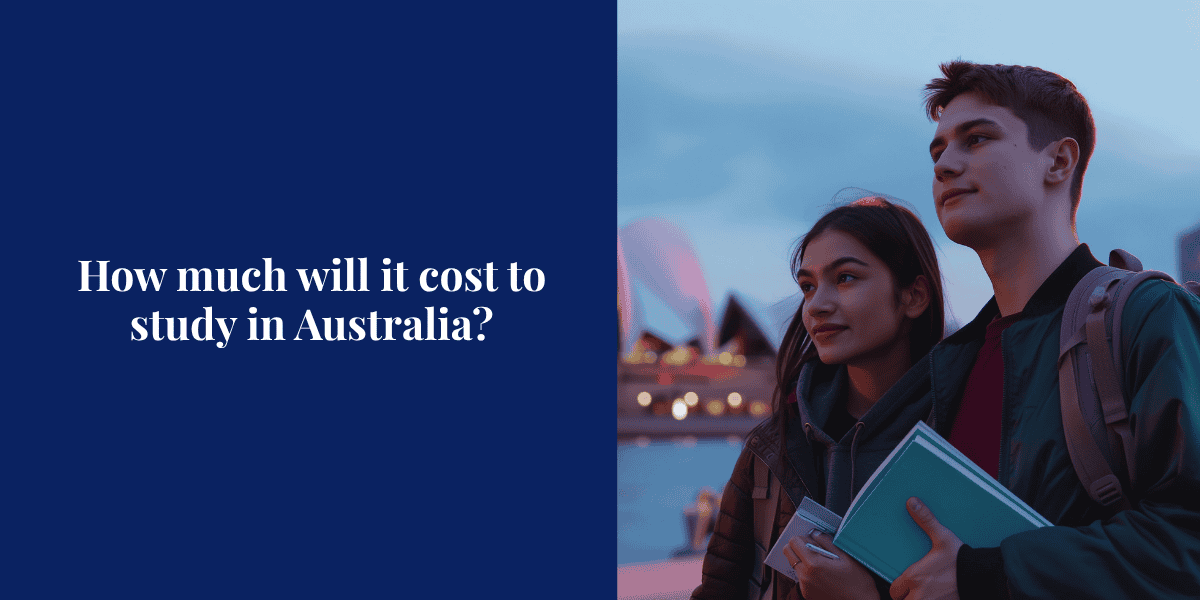
Australia is the world’s most sought-after study destination. Renowned for its globally ranked universities, excellent research opportunities, and a high standard of living, the Land Down Under welcomes thousands of international students every year. However, before making plans to immigrate to Australia for higher education, it’s important to understand the total financial commitment.
In this blog, we break down the cost of study in Australia, including tuition, living expenses, visa fees, and additional costs, so you can plan your academic journey with confidence.
Tuition Fees in Australia
Tuition fees form the biggest portion of your expenses. These vary significantly based on the institution, the level of study, and the course you choose.
Undergraduate Courses
- Cost Range: AUD 20,000 to 45,000 per year
- Popular Programs: Business, Engineering, IT, Nursing, Education
- Bachelor’s degrees in Australia usually take 3 to 4 years to complete.
Postgraduate Courses (Masters)
- Cost Range: AUD 22,000 to 50,000 per year
- Popular Programs: MBA, Data Science, Public Health, Finance, Environmental Science
- Most Master’s programs are 1 to 2 years in duration.
Doctoral Programs (PhD)
- Cost Range: AUD 18,000 to 42,000 per year
- PhD programs often include funding options or research stipends.
Vocational Education and Training (VET)
- Cost Range: AUD 4,000 to 22,000 per year
- Offered at TAFE institutions, VET programs focus on practical skills.
English Language Courses
- Cost: AUD 300 to 400 per week
- Ideal for students wanting to improve their English before beginning formal studies.
Many universities offer scholarships and early-bird discounts. At Cross Border Education, we help students identify affordable universities and apply for scholarships to reduce their cost of study in Australia.
Living Expenses in Australia
Living costs depend heavily on your city of residence and lifestyle choices. As per the Department of Home Affairs, a single international student should have access to at least AUD 24,505 per year to cover living expenses. The estimated monthly breakdown:
|
Type |
Cost |
|---|---|
|
Accommodation |
AUD 600 - 1,200 |
|
Food and Groceries |
AUD 300 - 600 |
|
Transport |
AUD 100 - 200 |
|
Phone and Internet |
AUD 80 - 150 |
|
Utilities (electricity, water, gas) |
AUD 100 - 200 |
|
Entertainment and Miscellaneous |
AUD 150 - 300 |
Cities like Sydney and Melbourne are generally more expensive, while cities like Adelaide, Perth, and Brisbane offer lower living costs. Living in university dorms or shared accommodation can help reduce overall expenses. Cross Cross-border education helps students find affordable housing and manage their cost of living in Australia.
Visa and Insurance Costs
To immigrate to Australia as a student, you will need a Subclass 500 Student Visa. Student Visa charges include:
- Application Fee: AUD 710
- Overseas Student Health Cover (OSHC): AUD 500 – 700/year
- Biometrics and Medical Exams: Additional charges apply depending on your country
OSHC is mandatory and must cover your entire stay in Australia. It includes access to medical services and hospital care.
Part-Time Jobs and Financial Support
Working while studying is a great way to offset your expenses.
- Work Rights: Up to 48 hours per fortnight during the semester and unlimited hours during breaks.
- Average Hourly Wage: AUD 20 – 25
- Job Options: Retail, hospitality, delivery, tutoring, and administrative work.
- Financial Aid and Scholarships: This includes University Scholarships and Government Scholarships.
Travel and Initial Costs
Before you even start classes, there are some upfront expenses to consider:
- Flight Tickets: AUD 1,000 – 2,000 (one-way from India to Australia)
- Initial Accommodation Setup: AUD 500 – 1,000
- Textbooks and Supplies: AUD 500 – 1,000 per semester
- Public Transport Card: AUD 30 – 50/month
Total Estimated Annual Cost
|
Category |
Estimated Cost (AUD/year) |
|---|---|
|
Tuition |
20,000 – 45,000 |
|
Living Expenses |
24,505 |
|
Visa and Health Cover |
1,200 – 1,500 |
|
Travel and Miscellaneous |
1,500 – 2,500 |
|
Total |
47,000 – 73,000 |
How Cross-Border Education Can Help?
At Cross Border Education, we understand that affordability is a key concern when deciding to study abroad. That is why we offer:
- Personalized university and course selection based on your budget
- Expert visa application and documentation support
- End-to-end assistance for accommodation, scholarships, and health cover
- Career guidance and post-study work visa counseling
- Pre-departure sessions to ensure you're fully prepared
Studying in Australia is a smart investment in your future. With transparent financial planning and expert guidance, it is possible to make it affordable. The cost of studying in Australia may seem high at first, but with scholarships, part-time work, and the right planning, you can manage it efficiently.
Conclusion
Studying in Australia is a dream for many international students, but understanding the overall cost is crucial for planning. The total expenses include tuition fees, accommodation, living costs, health insurance, and student visa fees. Tuition can range from AUD 20,000 to 45,000 per year, depending on the course and university. Living expenses like rent, food, transport, and utilities generally cost around AUD 21,000 per year.
Additional costs include the OSHC health insurance, which is mandatory, and the subclass 500 student visa, which costs approximately AUD 710. While Australia is a high-quality education destination, budgeting smartly and exploring scholarships can significantly reduce the financial burden. For expert guidance, Cross Border Education can assist you in planning your journey to immigrate to Australia with confidence.


